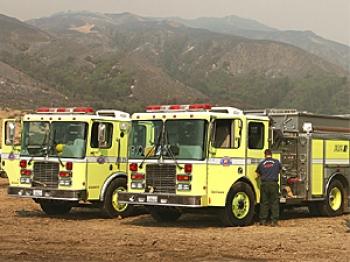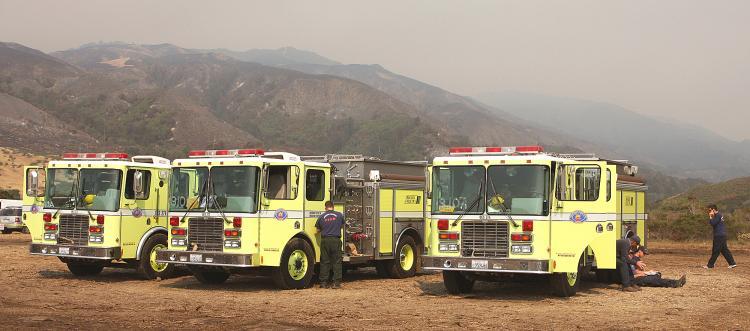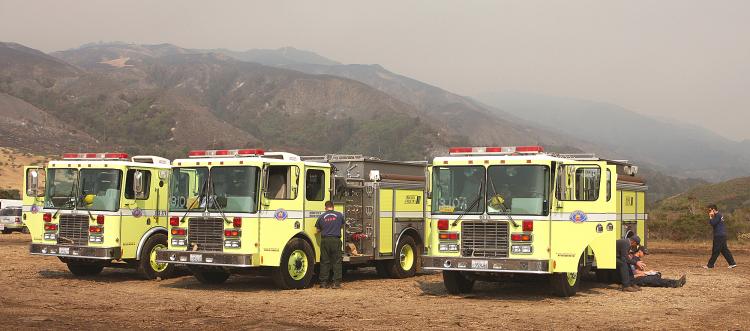Cooperation Helps in Basin Fire Battle
Local, national, and international crews are working together to contain the Basin Complex Wildland Fire.

Firefighters take a break as they prepare to tackle the Basin Complex Wildland Fire near Big Sur, California. Maria Daly/The Epoch Times
|Updated:



